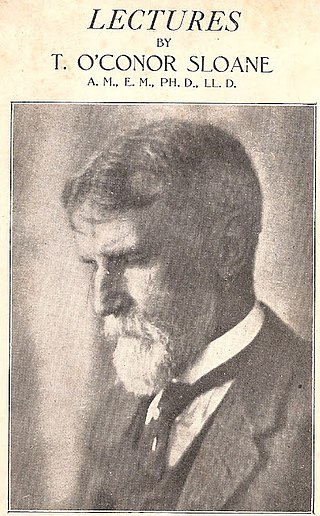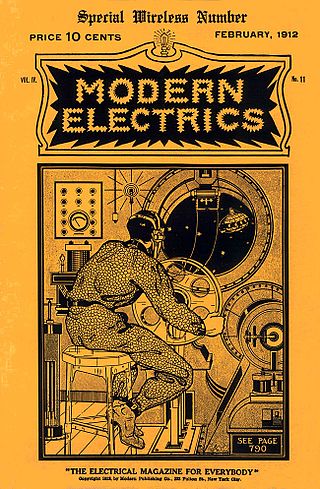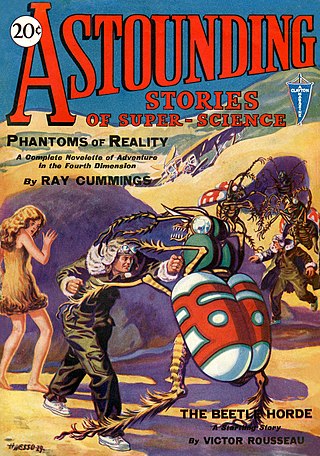System of government
| Part of the Politics series | ||||||||
| Basic forms of government | ||||||||
|---|---|---|---|---|---|---|---|---|
| List of forms of government | ||||||||
Source of power
| ||||||||
Power ideology
| ||||||||
| | ||||||||
Scientocracy is the practice of basing public policies on science.
| Part of the Politics series |
| Basic forms of government |
|---|
| List of forms of government |
| |
Scientocracy is the practice of basing public policies on science.
Peter A. Ubel, an American physician, is a proponent of scientocracy. In an article titled "Scientocracy: Policy making that reflects human nature", he writes, "When I talk about Scientocracy, then, I'm not talking about a world ruled by behavioral scientists, or any other kind of scientists. Instead, I am imagining a government of the people, but informed by scientists. A world where people don't argue endlessly about whether educational vouchers will improve schools, whether gun control will reduce crime, or whether health savings accounts can lower health care expenditures,... but one instead where science has a chance to show us whether vouchers, gun control laws, and health savings accounts work and, if so, under what conditions." [1]
Deepak Kumar, a historian, has written about the "Emergence of 'Scientocracy'" in India. [2]
Florence Caddy (1837–1923) wrote a book titled Through the fields with Linnaeus: a chapter in Swedish history. That book was published in two volumes in 1887. In volume 1 she wrote, "His lesson in Hamburg had taught him that a novus homo must not be arrogant when he enters the society of the scientocracy, and that he must not run himself rashly against vested interests. Yet for all his poverty, Carl Linnaeus seems to have lived in intimacy with the scientocrats of Leyden—Van Royen, Van Swieten, Lieberkuhn, Lawson, and Gronovius." [3] In these two sentences she uses "society of the scientocracy" and "scientocrats" to refer to groups of eminent scientists of that time.
In 1933, Hugo Gernsback defined scientocracy as "the direction of the country and its resources by Scientists and not by Technicians". [4]

Carl Linnaeus, also known after his ennoblement in 1761 as Carl von Linné, was a Swedish botanist, zoologist, taxonomist, and physician who formalised binomial nomenclature, the modern system of naming organisms. He is known as the "father of modern taxonomy". Many of his writings were in Latin; his name is rendered in Latin as Carolus Linnæus and, after his 1761 ennoblement, as Carolus a Linné.

Hugo Gernsback was a Luxembourgish–American editor and magazine publisher, whose publications included the first science fiction magazine, Amazing Stories. His contributions to the genre as publisher were so significant that, along with the novelists H. G. Wells and Jules Verne, he is sometimes called "The Father of Science Fiction". In his honor, annual awards presented at the World Science Fiction Convention are named the "Hugos".

Natural history is a domain of inquiry involving organisms, including animals, fungi, and plants, in their natural environment, leaning more towards observational than experimental methods of study. A person who studies natural history is called a naturalist or natural historian.

The Royal Swedish Academy of Sciences is one of the royal academies of Sweden. Founded on 2 June 1739, it is an independent, non-governmental scientific organization that takes special responsibility for promoting natural sciences and mathematics and strengthening their influence in society, whilst endeavouring to promote the exchange of ideas between various disciplines.

Amazing Stories is an American science fiction magazine launched in April 1926 by Hugo Gernsback's Experimenter Publishing. It was the first magazine devoted solely to science fiction. Science fiction stories had made regular appearances in other magazines, including some published by Gernsback, but Amazing helped define and launch a new genre of pulp fiction.

Thomas O'Conor Sloane was an American scientist, inventor, author, editor, educator, and linguist, perhaps best known for writing The Standard Electrical Dictionary and as the editor of Scientific American, from 1886 to 1896 and the first science fiction magazine, Amazing Stories, from 1929 to 1938.
Scientific consensus is the generally held judgment, position, and opinion of the majority or the supermajority of scientists in a particular field of study at any particular time.
Scientific racism, sometimes termed biological racism, is the pseudoscientific belief that empirical evidence exists to support or justify racism, racial inferiority, or racial superiority. Before the mid-20th century, scientific racism received credence throughout the scientific community, but it is no longer considered scientific. The division of humankind into biologically distinct groups, and the attribution of specific traits both physical and mental to them by constructing and applying corresponding explanatory models, i.e. racial theories, is sometimes called racialism, race realism, or race science by its proponents. Modern scientific consensus rejects this view as being irreconcilable with modern genetic research.

Chromotherapy, sometimes called color therapy, colorology or cromatherapy, is an alternative medicine method that is considered pseudoscience and quackery. Chromotherapists claim to be able to use light in the form of color to balance "energy" lacking from a person's body, whether it be on physical, emotional, spiritual, or mental levels. For example, they thought that shining a colored light on a person would cure constipation.

The technocracy movement was a social movement active in the United States and Canada in the 1930s which favored technocracy as a system of government over representative democracy and concomitant partisan politics. Historians associate the movement with engineer Howard Scott's Technical Alliance and Technocracy Incorporated, prior to the internal factionalism that dissolved the latter organization during the Second World War. Technocracy was ultimately overshadowed by other proposals for dealing with the crisis of the Great Depression. The technocracy movement proposed replacing partisan politicians and business people with scientists and engineers who had the technical expertise to manage the economy. But the movement did not fully aspire to scientocracy.
Technocracy is a form of government in which the decision-maker or makers are selected based on their expertise in a given area of responsibility, particularly with regard to scientific or technical knowledge. This system explicitly contrasts with representative democracy, the notion that elected representatives should be the primary decision-makers in government, though it does not necessarily imply eliminating elected representatives. Decision-makers are selected based on specialized knowledge and performance rather than political affiliations, parliamentary skills, or popularity.

Ralph 124C 41 +, by Hugo Gernsback, is an early science fiction novel, written as a twelve-part serial in Modern Electrics magazine, which Gernsback edited, beginning in April 1911. It was compiled into novel/book form in 1925. While it pioneered many ideas found in later science fiction, it has been critically panned for its "inept writing". The title contains a play on words, meaning "One to foresee for one another". In the introduction to the first volume of Science-Fiction Plus, dated March 1953, Gernsback called for patent reform to give science fiction authors the right to create patents for ideas without having patent models because many of their ideas predated the technical progress needed to develop specifications for their ideas. The introduction referenced the numerous prescient technologies described throughout Ralph 124C 41+.

Wonder Stories was an early American science fiction magazine which was published under several titles from 1929 to 1955. It was founded by Hugo Gernsback in 1929 after he had lost control of his first science fiction magazine, Amazing Stories, when his media company Experimenter Publishing went bankrupt. Within a few months of the bankruptcy, Gernsback launched three new magazines: Air Wonder Stories, Science Wonder Stories, and Science Wonder Quarterly.
WRNY was a New York City AM radio station that began operating in 1925. It was started by Hugo Gernsback's Experimenter Publishing Company to promote his radio and science magazines. Starting in August 1928, WRNY was one of the first stations to make regularly scheduled experimental television broadcasts. Experimenter Publishing went bankrupt in early 1929 and the station was purchased by the Curtiss Aeroplane and Motor Company to promote aviation. WRNY was deleted in 1934, as part of a consolidation on its shared frequency by surviving station WHN.
The Society for Women's Health Research (SWHR) is a national non-profit organization based in Washington D.C. SWHR is the thought leader in research on biological differences in disease and is dedicated to transforming women's health through science, advocacy, and education.

Experimenter Publishing was an American media company founded by Hugo Gernsback in 1915. The first magazine was The Electrical Experimenter (1913–1931) and the most notable magazines were Radio News (1919–1985) and Amazing Stories (1926–2005). Their radio station, WRNY, began broadcasting experimental television in 1928. In early 1929 the company was forced into bankruptcy and the Gernsback brothers lost control of Experimenter Publishing. The magazines did not miss an issue and were quickly sold to another publisher. The Gernsbacks promptly started new magazines to compete with their former ones.

Scoops was a weekly British science fiction magazine published by Pearson's in tabloid format in 1934, edited by Haydn Dimmock. Scoops was launched as a boy's paper, and it was not until several issues had appeared that Dimmock discovered there was an adult audience for science fiction. Circulation was poor, and Dimmock attempted to change the magazine's focus to more mature material. He reprinted Arthur Conan Doyle's The Poison Belt, improved the cover art, and obtained fiction from British science fiction writers such as John Russell Fearn and Maurice Hugi, but to no avail. Pearson's cancelled the magazine because of poor sales; the twentieth issue, dated 23 June 1934, was the last. The failure of the magazine contributed to the belief that Britain could not support a science fiction magazine, and it was not until 1937, with Tales of Wonder, that another attempt was made.

Science-Fiction Plus was an American science fiction magazine published by Hugo Gernsback for seven issues in 1953. In 1926, Gernsback had launched Amazing Stories, the first science fiction magazine, but he had not been involved in the genre since 1936, when he sold Wonder Stories. Science-Fiction Plus was initially in slick format, meaning that it was large-size and printed on glossy paper. Gernsback had always believed in the educational power of science fiction, and he continued to advocate his views in the new magazine's editorials. The managing editor, Sam Moskowitz, had been a reader of the early pulp magazines, and published many writers who had been popular before World War II, such as Raymond Z. Gallun, Eando Binder, and Harry Bates. Combined with Gernsback's earnest editorials, the use of these early writers gave the magazine an anachronistic feel.

Analog Science Fiction and Fact is an American science fiction magazine published under various titles since 1930. Originally titled Astounding Stories of Super-Science, the first issue was dated January 1930, published by William Clayton, and edited by Harry Bates. Clayton went bankrupt in 1933 and the magazine was sold to Street & Smith. The new editor was F. Orlin Tremaine, who soon made Astounding the leading magazine in the nascent pulp science fiction field, publishing well-regarded stories such as Jack Williamson's Legion of Space and John W. Campbell's "Twilight". At the end of 1937, Campbell took over editorial duties under Tremaine's supervision, and the following year Tremaine was let go, giving Campbell more independence. Over the next few years Campbell published many stories that became classics in the field, including Isaac Asimov's Foundation series, A. E. van Vogt's Slan, and several novels and stories by Robert A. Heinlein. The period beginning with Campbell's editorship is often referred to as the Golden Age of Science Fiction.
A species description is a formal scientific description of a newly encountered species, usually in the form of a scientific paper. Its purpose is to give a clear description of a new species of organism and explain how it differs from species that have been described previously or are related. To be considered valid, a species description must follow guidelines established over time. Naming requires adherence to respective codes, for example: in zoology, the International Code of Zoological Nomenclature (ICZN); plants, the International Code of Nomenclature for algae, fungi, and plants (ICN); viruses, the International Committee on Taxonomy of Viruses (ICTV). The species description often contains photographs or other illustrations of type material along with a note on where they are deposited. The publication in which the species is described gives the new species a formal scientific name. Some 1.9 million species have been identified and described, out of some 8.7 million that may actually exist. Millions more have become extinct throughout the existence of life on Earth.